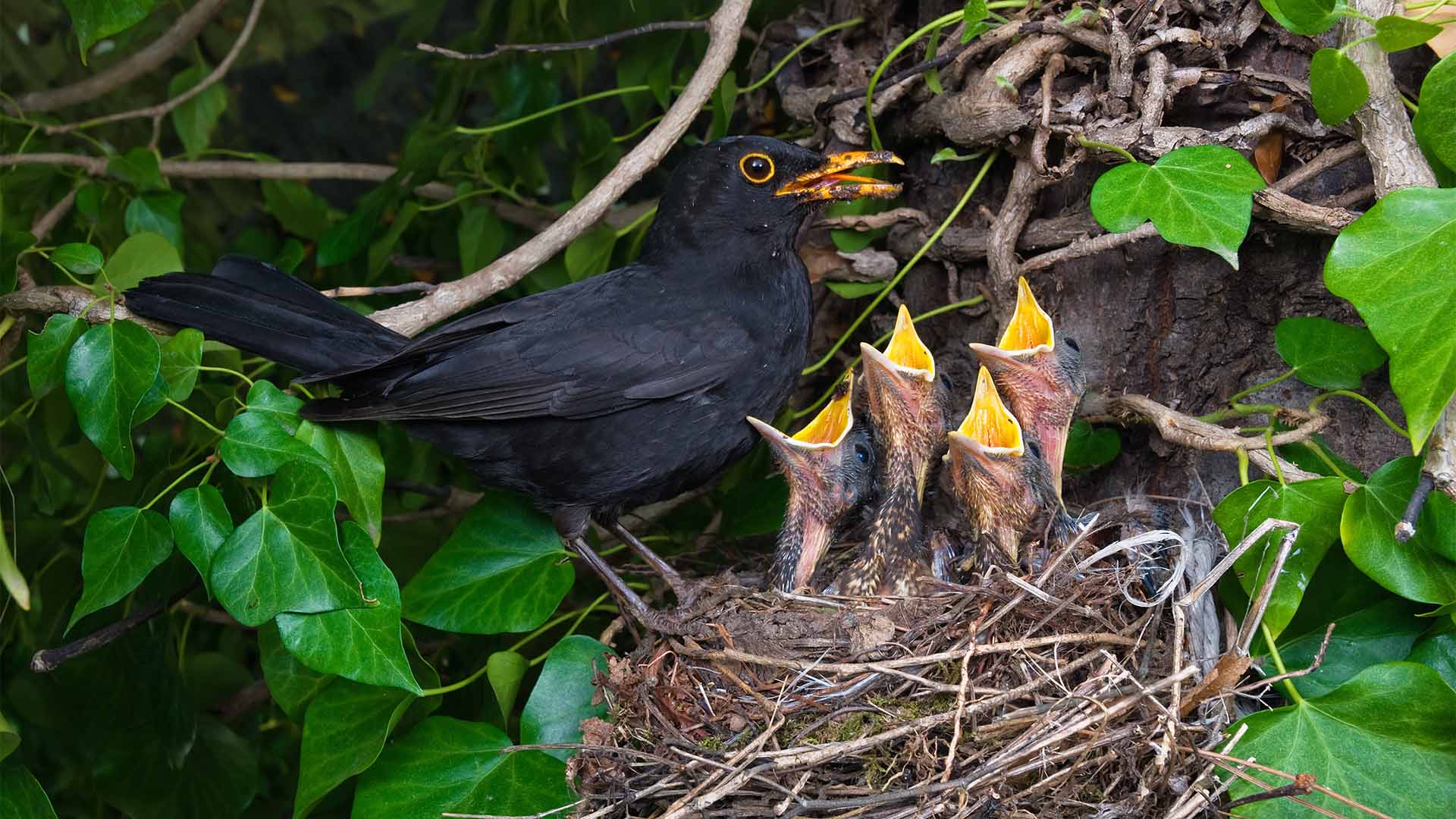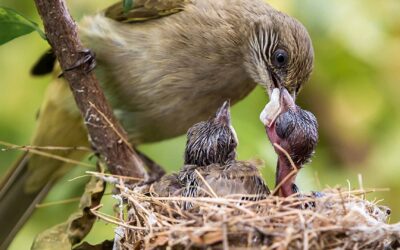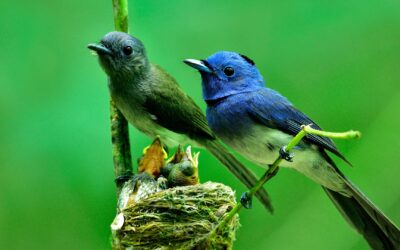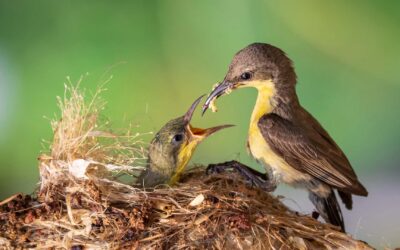What’s All That Chirping? Meet the Baby Blackbirds
If you’ve ever walked near a leafy hedge or quiet backyard and heard a chorus of high-pitched peeping, you might’ve been near a blackbird nest! In this snapshot, we see a proud adult blackbird feeding its fluffy, wide-mouthed babies—all four of them shouting, “Me first!”
These are baby blackbirds, also called chicks or nestlings, and they are *very* hungry. From sunrise to sunset, they beg for food every few minutes. Their parent, usually the dad, is seen here mid-meal-delivery, probably with a juicy worm or insect snack.
How Baby Blackbirds Grow So Fast
Blackbirds, especially the Eurasian blackbird (Turdus merula), are famous for their loud songs and quick-growing chicks. Once hatched, these little ones go from wobbly fuzzballs to fluttering teenagers in just about 13–15 days!
- Hatch Day: Blackbird chicks are born featherless and blind. Total jellybeans with beaks!
- Day 5: Pinfeathers (tiny feather shafts) start poking through their skin.
- Day 10: Their eyes open, and they start to resemble real birds.
- Day 14: It’s already time to leave the nest! They “fledge” and hop into nearby branches.
Did You Know? Baby Blackbird Facts
- Teamwork Parents: Both blackbird parents help with feeding, but the male usually does more if the female is already laying eggs for the next clutch.
- Big Mouths Help! Their bright yellow gapes (mouth edges) help parents see where to drop the food—like neon “open” signs!
- Super Snackers: One baby blackbird can eat over 100 insects a day—yikes!
Where Do Blackbirds Nest?
These birds love cozy, hidden spots. Their nests are often built in hedges, shrubs, or climbing vines—like in this photo. The nest is a strong cup made of grass, twigs, and mud, sometimes lined with hair or moss for extra comfort.
How to Tell a Baby Blackbird from a Baby Starling
People sometimes mix up blackbird chicks with baby starlings, but here’s a quick ID tip:
- Blackbird chicks: Big yellow-orange mouths, longer beaks, and fuzzier feathers early on.
- Starling chicks: Have darker, shorter beaks and make more buzzing, mechanical-sounding calls.
Also, adult blackbirds are jet black (males) or brown (females) with orange-yellow beaks, while starlings are more iridescent with a speckled look.
What Can You Do to Help Baby Blackbirds?
🌿 If you see a nest, give it space and keep curious pets away. Blackbirds are easily startled, and too much disturbance can make them abandon their nest.
🐞 Consider planting native shrubs or leaving a small patch of your yard wild—this gives them more bugs to feed on and better hiding spots for nests.
Want to learn more? Check out RSPB’s guide to blackbirds for even more feathery facts.
A Chirpy Ending
Next time you hear a ruckus in the bushes, look a little closer (but not too close—use these bird-noculars!). You might spot a flurry of beaks in a nest and witness the incredible, noisy journey of baby blackbirds growing up, one worm at a time 🐛
Nature is full of stories, and even the tiniest chirp can lead to the biggest discoveries. What bird nests have you spotted near your home?




